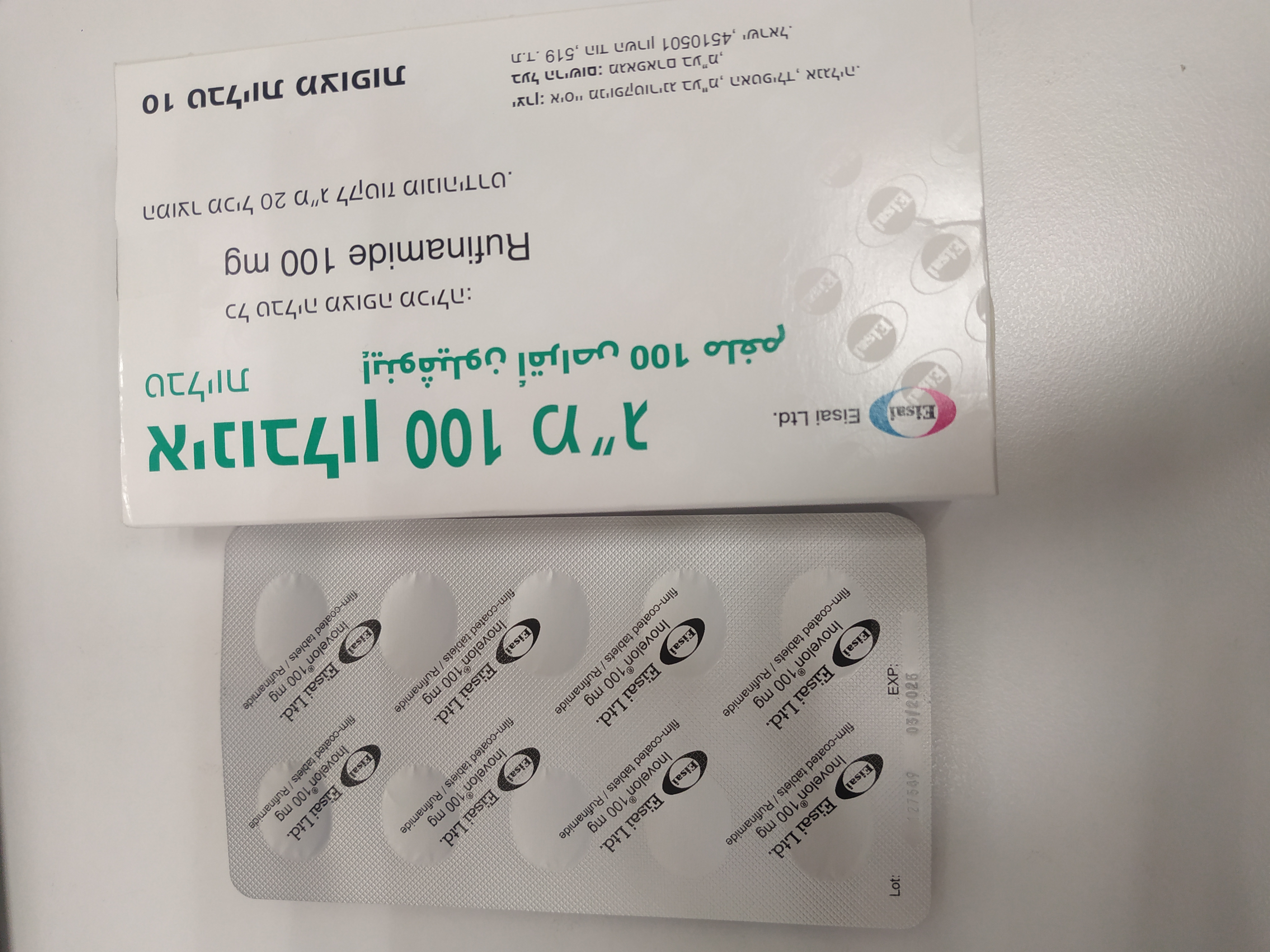Quest for the right Drug

אינובלון טבליות 100 מ"ג INOVELON 100 MG TABLETS (RUFINAMIDE)
תרופה במרשם
תרופה בסל
נרקוטיקה
ציטוטוקסיקה
צורת מתן:
פומי : PER OS
צורת מינון:
טבליות מצופות פילם : FILM COATED TABLETS
עלון לרופא
מינוניםPosology התוויות
Indications תופעות לוואי
Adverse reactions התוויות נגד
Contraindications אינטראקציות
Interactions מינון יתר
Overdose הריון/הנקה
Pregnancy & Lactation אוכלוסיות מיוחדות
Special populations תכונות פרמקולוגיות
Pharmacological properties מידע רוקחי
Pharmaceutical particulars אזהרת שימוש
Special Warning עלון לרופא
Physicians Leaflet
Special Warning : אזהרת שימוש
4.4 Special warnings and precautions for use Status epilepticus Status epilepticus cases have been observed during treatment with rufinamide in clinical development studies, whereas no such cases were observed with placebo. These events led to rufinamide discontinuation in 20 % of the cases. If patients develop new seizure types and/or experience an increased frequency of status epilepticus that is different from the patient’s baseline condition, then the benefit risk ratio of the therapy should be reassessed. Withdrawal of rufinamide Inovelon tablets should be withdrawn gradually to reduce the possibility of seizures on withdrawal. In clinical studies discontinuation was achieved by reducing the dose by approximately 25% every two days. There is insufficient data on the withdrawal of concomitant antiepileptic medicinal products once seizure control has been achieved with the addition of Inovelon tablets. Central Nervous System reactions Rufinamide treatment has been associated with dizziness, somnolence, ataxia and gait disturbances, which could increase the occurrence of accidental falls in this population (see Section 4.8). Patients and carers should exercise caution until they are familiar with the potential effects of this medicinal product. Hypersensitivity reactions Serious antiepileptic medicinal product hypersensitivity syndrome including DRESS (Drug Reaction with Eosinophilia and Systemic Symptoms) and Stevens-Johnson syndrome have occurred in association with rufinamide therapy. Signs and symptoms of this disorder were diverse; however, patients typically, although not exclusively, presented with fever and rash associated with other organ system involvement. Other associated manifestations included lymphadenopathy, liver function tests abnormalities, and haematuria. As the disorder is variable in its expression, other organ system signs and symptoms not noted here may occur. The antiepileptic drug (AED) hypersensitivity syndrome occurred in close temporal association to the initiation of rufinamide therapy and in the paediatric population. If this reaction is suspected, rufinamide should be discontinued and alternative treatment started. All patients who develop a rash while taking rufinamide must be closely monitored. QT shortening In a thorough QT study, rufinamide produced a decrease in QTc interval proportional to concentration. Although the underlying mechanism and safety relevance of this finding is not known, clinicians should use clinical judgment when assessing whether to prescribe rufinamide to patients at risk from further shortening their QTc duration (e.g., Congenital Short QT Syndrome or patients with a family history of such a syndrome). Women of childbearing potential Women of childbearing potential must use contraceptive measures during treatment with Inovelon tablets. Physicians should try to ensure that appropriate contraception is used, and should use clinical judgement when assessing whether oral contraceptives, or the doses of the oral contraceptive components, are adequate based on the individual patients clinical situation (see Section 4.5 and 4.6). Lactose Inovelon tablets contains lactose, therefore patients with rare hereditary problems of galactose intolerance, the Lapp lactase deficiency or glucose-galactose malabsorption should not take this medicine. Sodium content This medicine contains less than 1 mmol sodium (23 mg) per daily dose, i.e. is essentially ‘sodium-free’. Suicidal ideation Suicidal ideation and behaviour have been reported in patients treated with antiepileptic agents in several indications. A meta-analysis of randomised placebo- controlled trials of anti- epileptic medicinal products has also shown a small increased risk of suicidal ideation and behaviour. The mechanism of this risk is not known and the available data do not exclude the possibility of an increased risk for Inovelon tablets. Therefore patients should be monitored for signs of suicidal ideation and behaviours and appropriate treatment should be considered. Patients (and caregivers of patients) should be advised to seek medical advice should signs of suicidal ideation or behaviour emerge.
Effects on Driving
4.7 Effects on ability to drive and use machines Inovelon tablets may cause dizziness, somnolence and blurred vision. Depending on the individual sensitivity, Inovelon tablets may have a minor to major influence on the ability to drive and use machines. Patients must be advised to exercise caution during activities requiring a high degree of alertness, e.g., driving or operating machinery.

פרטי מסגרת הכללה בסל
התרופה תינתן כטיפול משלים בתסמונת Lennox Gastaut.
מסגרת הכללה בסל
התוויות הכלולות במסגרת הסל
| התוויה | תאריך הכללה | תחום קליני | Class Effect | מצב מחלה |
|---|---|---|---|---|
| התרופה תינתן כטיפול משלים בתסמונת Lennox Gastaut. |
שימוש לפי פנקס קופ''ח כללית 1994
לא צוין
תאריך הכללה מקורי בסל
23/01/2011
הגבלות
תרופה מוגבלת לרישום ע'י רופא מומחה או הגבלה אחרת
מידע נוסף
עלון מידע לצרכן
20.11.14 - עלון לצרכן 05.09.22 - עלון לצרכן עברית 26.02.23 - עלון לצרכן עברית 22.11.23 - עלון לצרכן אנגלית 22.11.23 - עלון לצרכן ערבית 28.02.24 - עלון לצרכן עברית 17.07.24 - עלון לצרכן אנגלית 17.07.24 - עלון לצרכן ערבית 09.04.14 - החמרה לעלון 05.09.22 - החמרה לעלון 28.02.24 - החמרה לעלוןלתרופה במאגר משרד הבריאות
אינובלון טבליות 100 מ"ג